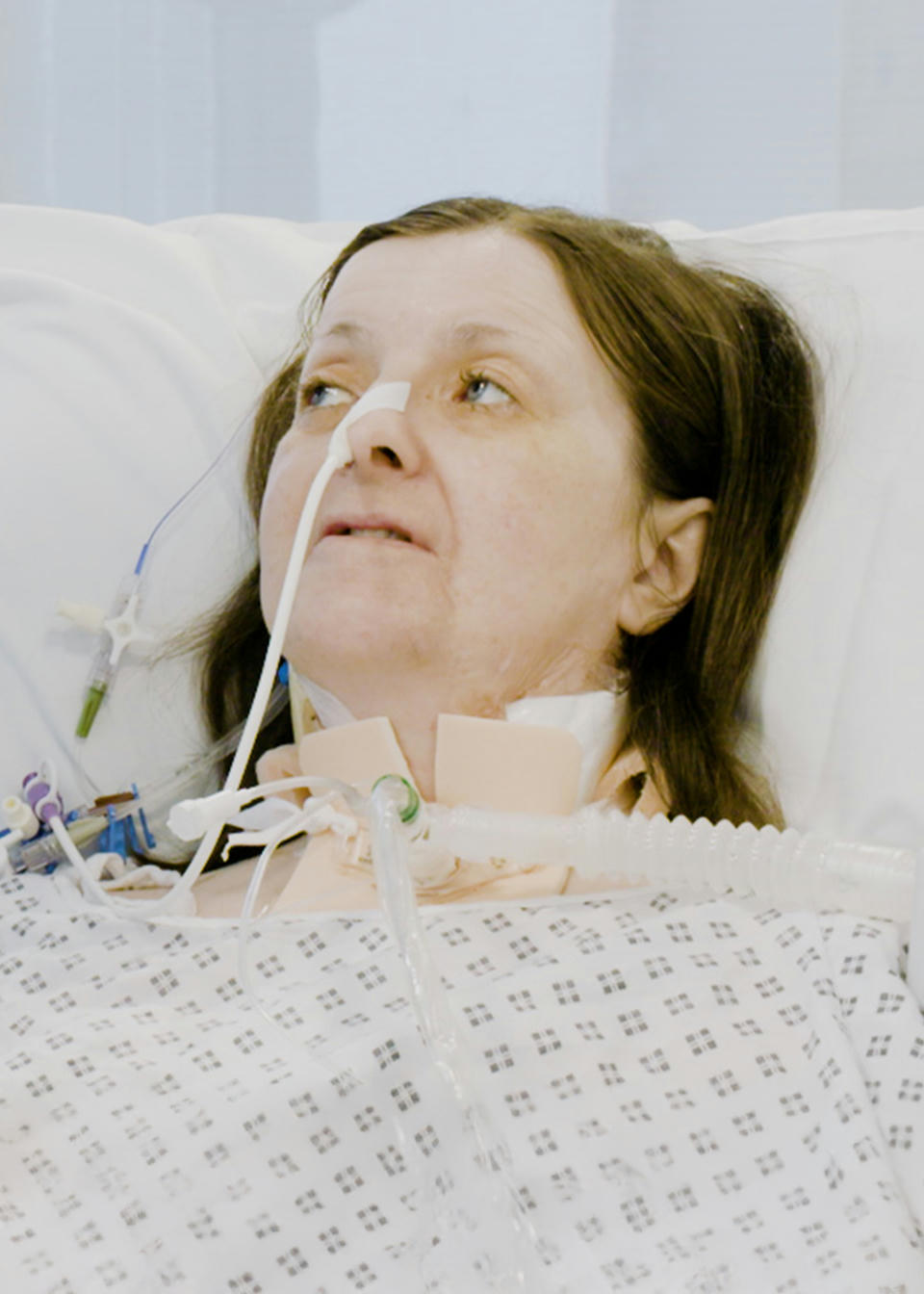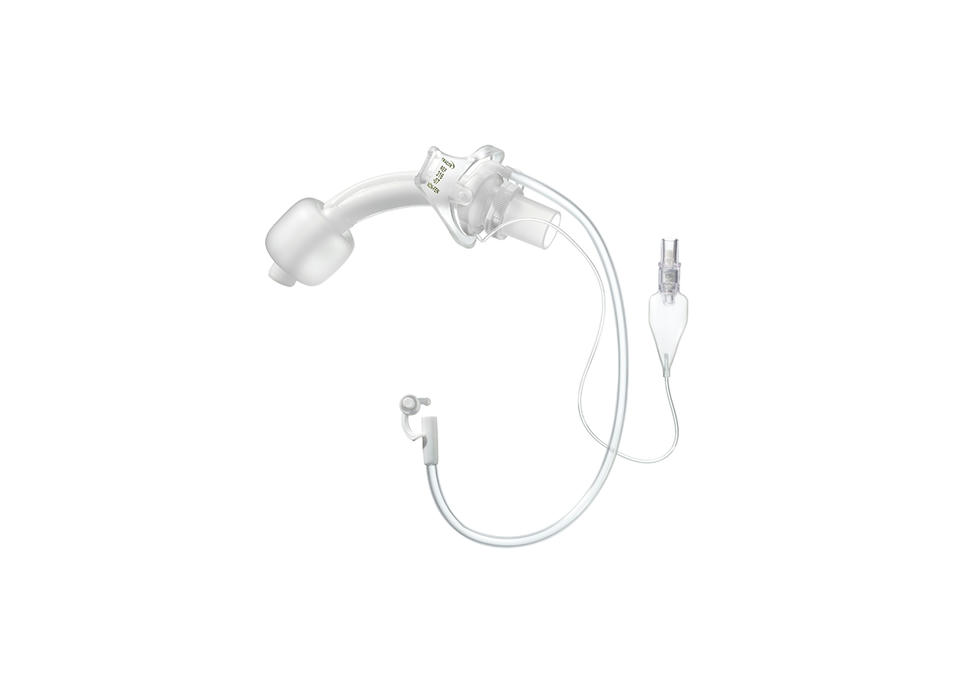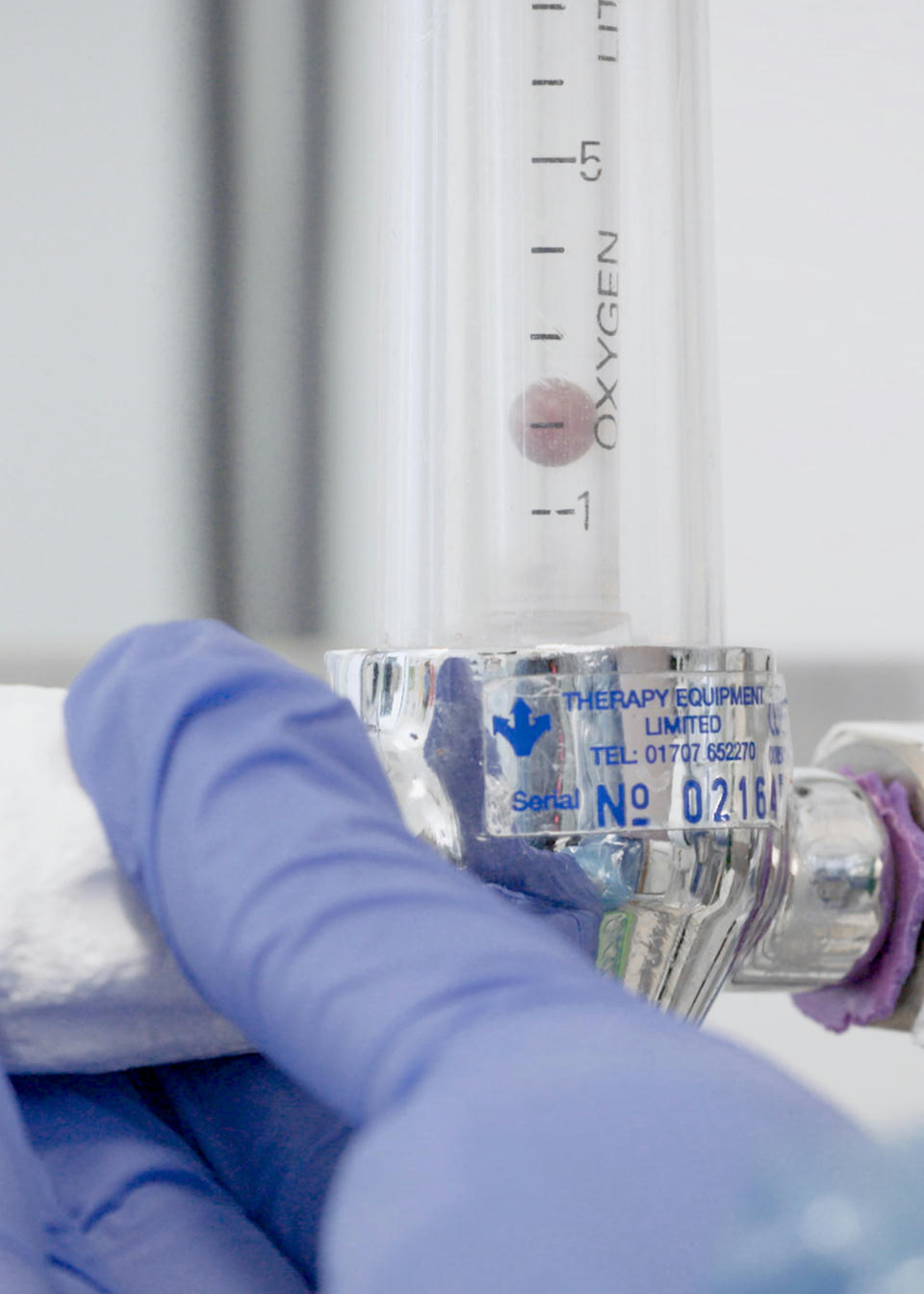Above Cuff Vocalization (ACV): Improving communication for patients with a tracheostomy tube and mechanical ventilation
Patients requiring a tracheostomy tube and mechanical ventilation often face communication barriers due to the inflated tracheostomy tube cuff. An inflated cuff prevents airflow through the vocal cords resulting in the inability to produce audible voice. This lack of airflow in the upper airway can also lead to sensorimotor dysfunction contributing to difficulty with secretion management and swallowing. Above Cuff Vocalization is a promising method to address these challenges.1-3

Interview
Learn more about ACV in this interview with Sarah Wallace, Speech-Language Therapist (SLT)
Get to know Sarah Wallace and her inspiring experiences and learn about the benefits of ACV for ventilated patients.
Sarah Wallace is a Consultant Speech and Language Therapist at Manchester University NHS Foundation Trust (MFT). In addition to her frontline role in MFT Critical Care, based at Wythenshawe Hospital, Sarah is SLT lead for the National Tracheostomy Safety Project and the Intensive Care Society (ICS); and a Specialist Advisor in Critical Care and Dysphagia for the Royal College of Speech and Language Therapists (RCSLT).
The Impact of ACV on Quality of Life in Patients with Tracheostomies
Above Cuff Vocalization (ACV) has shown to improve verbal communication with 50-80% of patients achieving audible phonation. 1-3 8 Studies, including a randomized controlled trial, highlight ACV's safety and benefits, such as successful phonation, enhanced cough and swallow function, and improved quality of life.2-4

Patient Journey with ACV
Witness Deb's remarkable experience with ACV as she and her husband share how enhanced communication has made a significant impact in their lives.

Subglottic suction tracheostomy tube
To achieve ACV, a tracheostomy tube with a subglottic suction channel is required. This subglottic suction channel can be used to remove secretions above the cuff which minimizes the risk of bacterially contaminated secretions entering the lower respiratory tract. For this reason, subglottic suctioning is recommended as a preventative measure for ventilator-associated pneumonia.10,11
Benefits of Above Cuff Vocalization (ACV)
- Enhanced Communication: ACV allows patients to speak, significantly improving their ability to communicate with healthcare professionals and family members, which can reduce anxiety, stress, and depression.1-4
- Improved Laryngeal Function: By enabling vocalization, ACV can help maintain and rehabilitate laryngeal function, which is crucial for swallowing and coughing.2,9
- Better Patient Experience: Being able to speak can greatly enhance the overall ICU experience for patients, making them feel more in control and connected.2,4,9
- Potential for Earlier Rehabilitation: Effective communication can facilitate earlier and more effective rehabilitation, contributing to better overall recovery outcomes.2,4,8
The ACV procedure
Above Cuff Vocalization involves the controlled application of airflow directed through the subglottic port of a tracheostomy tube. This airflow travels through the upper airway restoring audible voice.

To learn more about ACV, refer to the Above Cuff Vocalization (ACV) Guidelines - a practical, evidence-based resource designed for healthcare providers. These guidelines include:
- An overview and description of ACV
- Research supporting the use of ACV
- Illustrative images showing airflow during ACV
- Step-by-step instructions for setup and use
- Important safety considerations
- Practical tips for successful implementation
Tracoe Extract Tubes for ACV
The Tracoe Extract tubes are approved for Above Cuff Vocalization (ACV). Tracoe Twist Extract and Tracoe Twist Plus Extract tubes feature an innovative design with a flat, subglottic suction channel that can be connected to a suction port to effectively remove secretions that pool above the cuff. This advanced suction channel delivers significantly improved performance compared to the predecessor model, due to its larger flow cross-section and two strategically located suction points. As a result, secretions are suctioned more rapidly and thoroughly, ensuring enhanced efficiency.
Always consult the products IFU before initiating ACV to ensure alignment with specific instructions for patient selection and delivery.
Tracoe Twist Extract
Tracheostomy tube with low pressure cuff and subglottic suction
Tracoe Twist Extract
Tracoe Twist Plus Extract
Tracheostomy tube with low pressure cuff and subglottic suction channel
Tracoe Twist Plus Extract
Tracoe Vario Extract
Tracheostomy tube with adjustable neck flange, low-pressure cuff, subglottic suction, scale and 15 mm connector
Tracoe Vario Extract
Learn more about Above Cuff Vocalization:
References
1 Petosic A, Viravong MF, Martin AM, Nilsen CB, Olafsen K, Berntzen H. Above cuff vocalisation (ACV): A scoping review. Acta Anaesthesiol Scand. 2021 Jan;65(1):15-25. doi: 10.1111/aas.13706. Epub 2020 Nov 1. PMID: 32920849; PMCID: PMC7756796.
2 Mills CS, Michou E, King N, Bellamy MC, Siddle HJ, Brennan CA, Bojke C. Evidence for Above Cuff Vocalization in Patients With a Tracheostomy: A Systematic Review. Laryngoscope. 2022 Mar;132(3):600-611. doi: 10.1002/lary.29591. Epub 2021 May 1. PMID: 33932229.
3 McGrath BA, Wallace S, Wilson M, Nicholson L, Felton T, Bowyer C, Bentley AM. Safety and feasibility of above cuff vocalisation for ventilator-dependant patients with tracheostomies. J Intensive Care Soc. 2019 Feb;20(1):59-65. doi: 10.1177/1751143718767055. Epub 2018 Mar 28. PMID: 30792764; PMCID: PMC6376581.
4 Pandian V, Cole T, Kilonsky D, Holden K, Feller-Kopman DJ, Brower R, Mirski M. Voice-Related Quality of Life Increases With a Talking Tracheostomy Tube: A Randomized Controlled Trial. Laryngoscope. 2020 May;130(5):1249-1255. doi: 10.1002/lary.28211. Epub 2019 Aug 6. PMID: 31385620.
5 Pozuelo-Carrascosa DP, Herráiz-Adillo Á, Alvarez-Bueno C, Añón JM, Martínez-Vizcaíno V, Cavero-Redondo I. Subglottic secretion drainage for preventing ventilator-associated pneumonia: an overview of systematic reviews and an updated meta-analysis. Eur Respir Rev. 2020 Feb 12;29(155):190107. doi: 10.1183/16000617.0107-2019. Erratum in: Eur Respir Rev. 2022 Mar 23;31(163): Erratum in: Eur Respir Rev. 2022 Mar 23;31(163): PMID: 32051169; PMCID: PMC9488747.
6 Papazian L, Klompas M, Luyt CE. Ventilator-associated pneumonia in adults: a narrative review. Intensive Care Med. 2020 May;46(5):888-906. doi: 10.1007/s00134-020-05980-0. Epub 2020 Mar 10. PMID: 32157357; PMCID: PMC7095206.
7 Suger-Wiedeck H, Unertl K, von Baum H. Prävention der nosokomialen beatmungsassoziierten Pneumonie. Empfehlung der Kommission für Krankenhaushygiene und Infektionsprävention (KRINKO) beim Robert Koch-Institut [Prevention of nosocomial ventilator-associated pneumonia. The Commission for Hospital Hygiene and Infection Prevention (KRINKO) at the Robert Koch Institute]. Bundesgesundheitsblatt Gesundheitsforschung Gesundheitsschutz. 2013 Nov;56(11):1578-90. German. PMID: 24344412.
8 Gajic S, Jacobs L, Gellentien C, Dubin RM, Ma K. Implementation of Above-Cuff Vocalization After Tracheostomy Is Feasible and Associated With Earlier Speech. Am J Speech Lang Pathol. 2024 Jan 3;33(1):51-56. doi: 10.1044/2023_AJSLP-23-00184. Epub 2023 Dec 6. PMID: 38056485.
9 Wallace S, McGowan S, Sutt AL. Benefits and options for voice restoration in mechanically ventilated intensive care unit patients with a tracheostomy. J Intensive Care Soc. 2023 Feb;24(1):104-111. doi: 10.1177/17511437221113162. Epub 2022 Jul 10. PMID: 36874291; PMCID: PMC9975806.
10 Terragni P, Urbino R, Mulas F, et al. Occurrence of ventilator associated pneumonia using a tracheostomy tube with subglottic secretion drainage. Minerva Anestesiol. 2020;86(8):844-852.
11 Souza CR, Santana VT. Impact of supra-cuff suction on ventilator-associated pneumonia prevention. Impacto da aspiração supra-cuff
na prevenção da pneumonia associada à ventilação mecânica. Rev Bras Ter Intensiva. 2012;24(4):401-406.